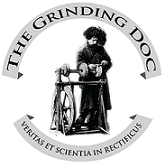For the 83rd episode of Cutting Tool Engineering's Grinding Doc video series, Dr. Jeffrey Badger visits with Rush Machinery in Rushville, N.Y., to begin a three-part series devoted to establishing scientific truing parameters. With the help of Rush Machinery President Bill Freese, Badger conducts a series of truing tests using his Grinding Doc Grindometer.
Part two of this series can be viewed here.
Part three of this series can be viewed here.
About the Grinding Doc Video Series: Thanks to his grinding courses and his work as an independent grinding consultant and the author of the "Ask the Grinding Doc" column in Cutting Tool Engineering magazine, Badger routinely receives questions about grinding from shops all over the world. Through the magazine column and this video series, he provides shops with the insight and guidance they seek.
For more information about the Grinding Doc, visit his website here.
About Rush Machinery: Rush Machinery specializes in manufacturing, servicing and marketing a complete line of production and support machinery for the cutting tool industry: Wheel Truing and Dressing Machines, Grinding Oil Filtration Systems, Carbide Rod and HSS Cut-Off Machines, Polycrystalline Tool Grinders, Drill and Tool Grinders, Tool Grinding Fixtures and Dynamic Balancing Machines.
For more information about Rush Machinery, visit the company website here.
Contact Details
Contact Details
Related Glossary Terms
- dressing
dressing
Removal of undesirable materials from “loaded” grinding wheels using a single- or multi-point diamond or other tool. The process also exposes unused, sharp abrasive points. See loading; truing.
- grinding
grinding
Machining operation in which material is removed from the workpiece by a powered abrasive wheel, stone, belt, paste, sheet, compound, slurry, etc. Takes various forms: surface grinding (creates flat and/or squared surfaces); cylindrical grinding (for external cylindrical and tapered shapes, fillets, undercuts, etc.); centerless grinding; chamfering; thread and form grinding; tool and cutter grinding; offhand grinding; lapping and polishing (grinding with extremely fine grits to create ultrasmooth surfaces); honing; and disc grinding.
- high-speed steels ( HSS)
high-speed steels ( HSS)
Available in two major types: tungsten high-speed steels (designated by letter T having tungsten as the principal alloying element) and molybdenum high-speed steels (designated by letter M having molybdenum as the principal alloying element). The type T high-speed steels containing cobalt have higher wear resistance and greater red (hot) hardness, withstanding cutting temperature up to 1,100º F (590º C). The type T steels are used to fabricate metalcutting tools (milling cutters, drills, reamers and taps), woodworking tools, various types of punches and dies, ball and roller bearings. The type M steels are used for cutting tools and various types of dies.
- truing
truing
Using a diamond or other dressing tool to ensure that a grinding wheel is round and concentric and will not vibrate at required speeds. Weights also are used to balance the wheel. Also performed to impart a contour to the wheel’s face. See dressing.


